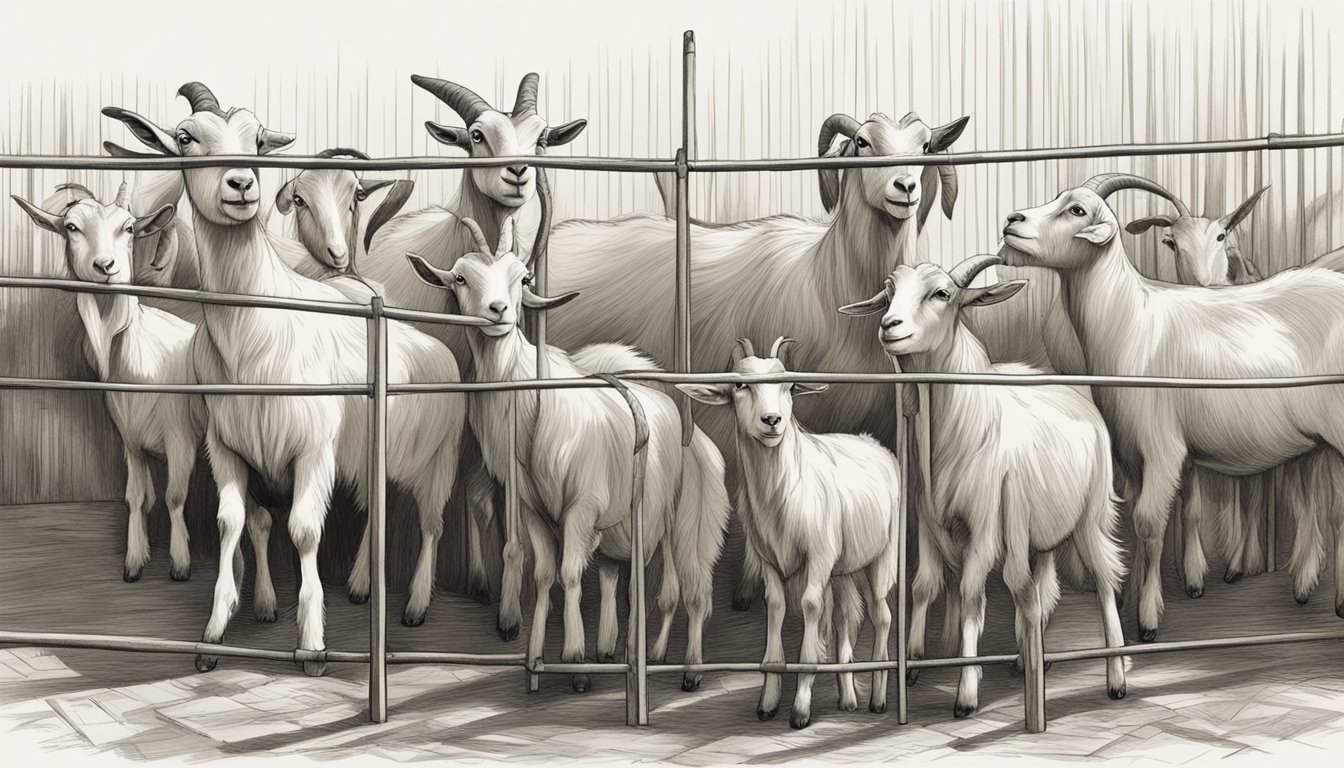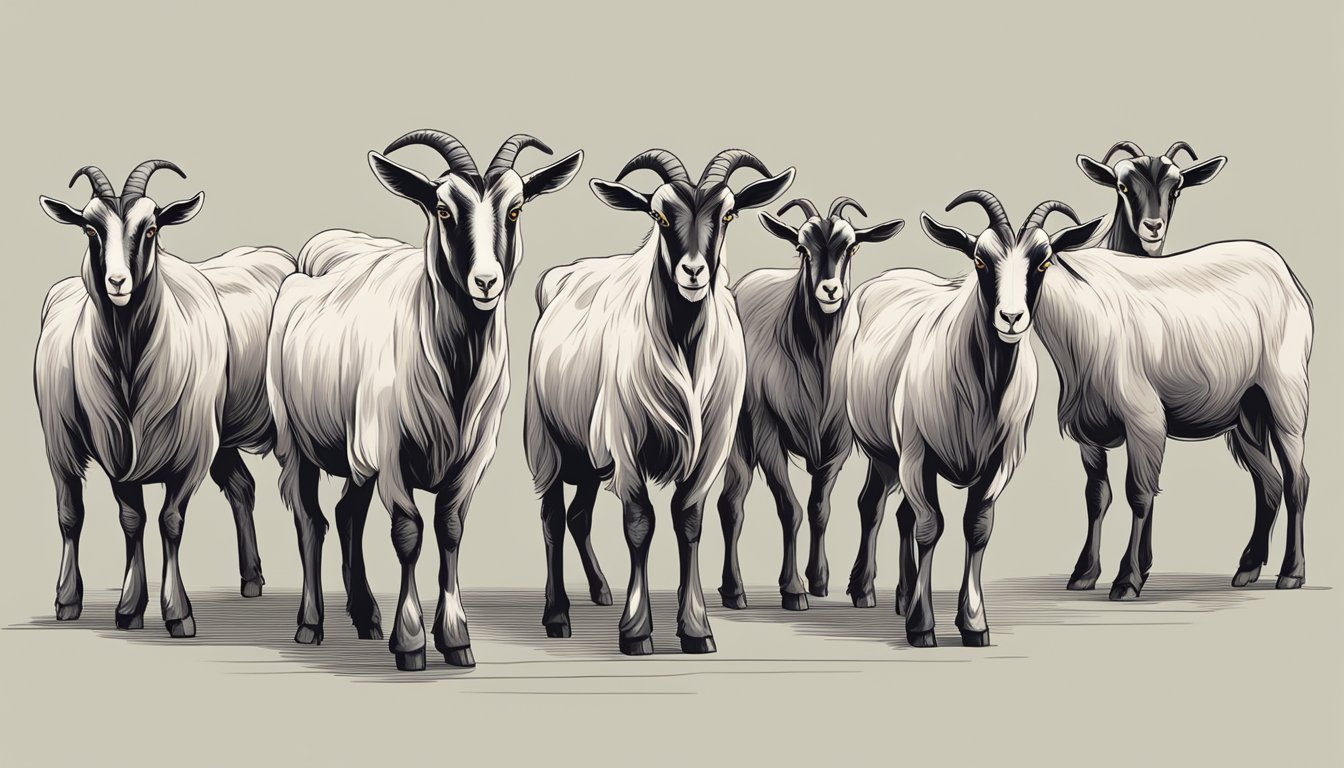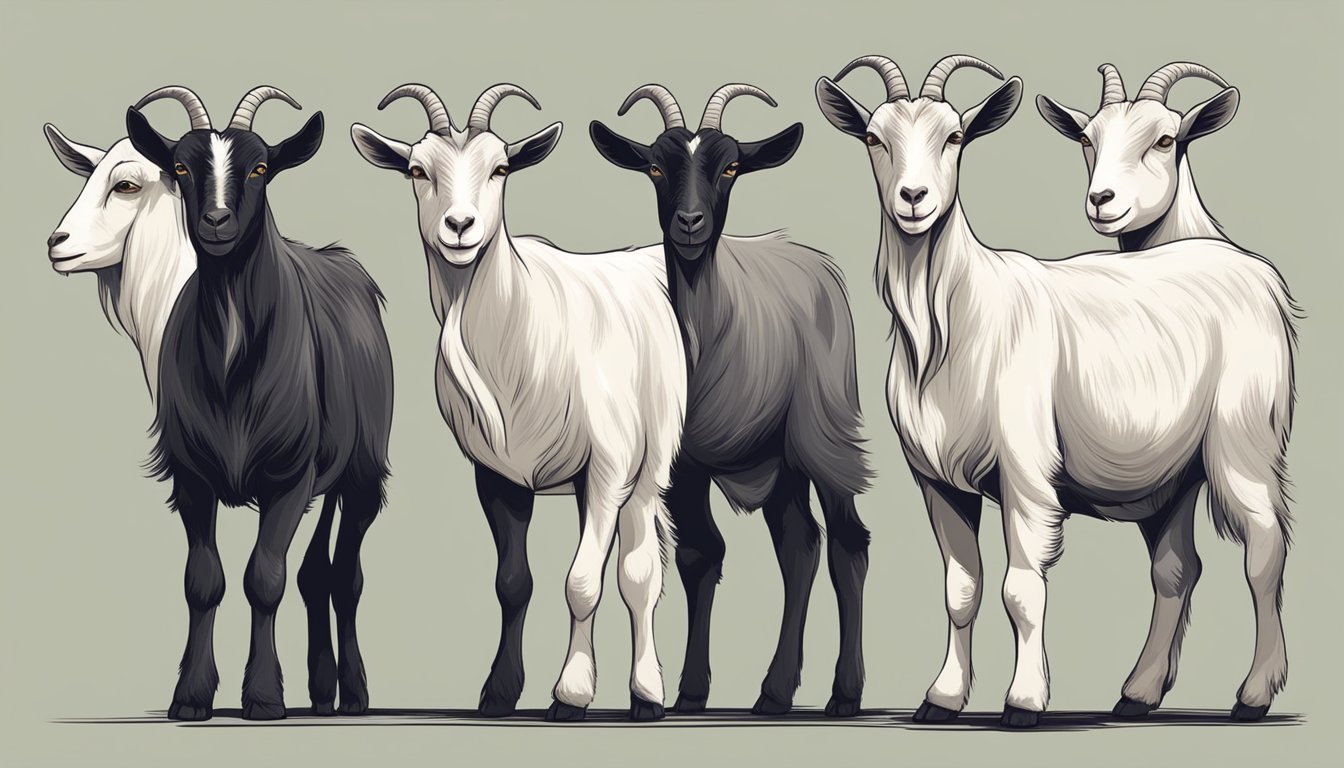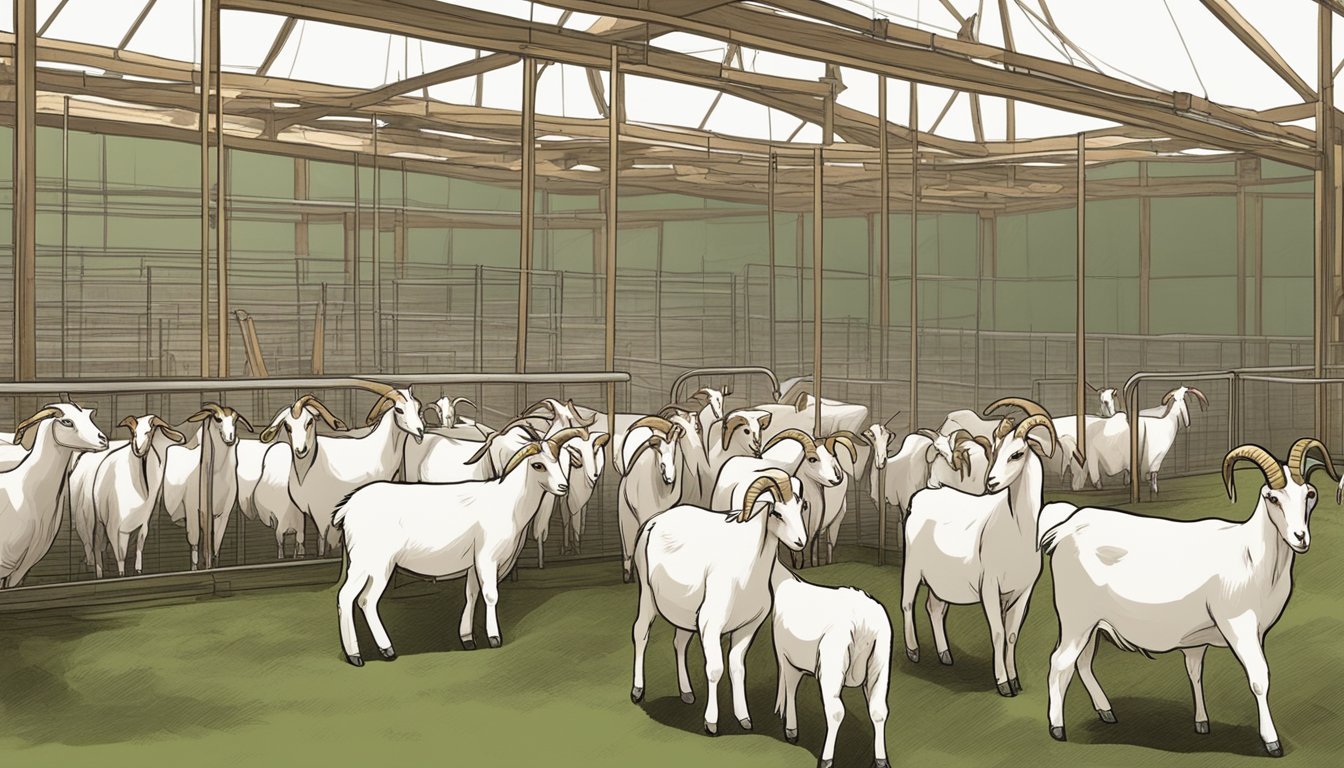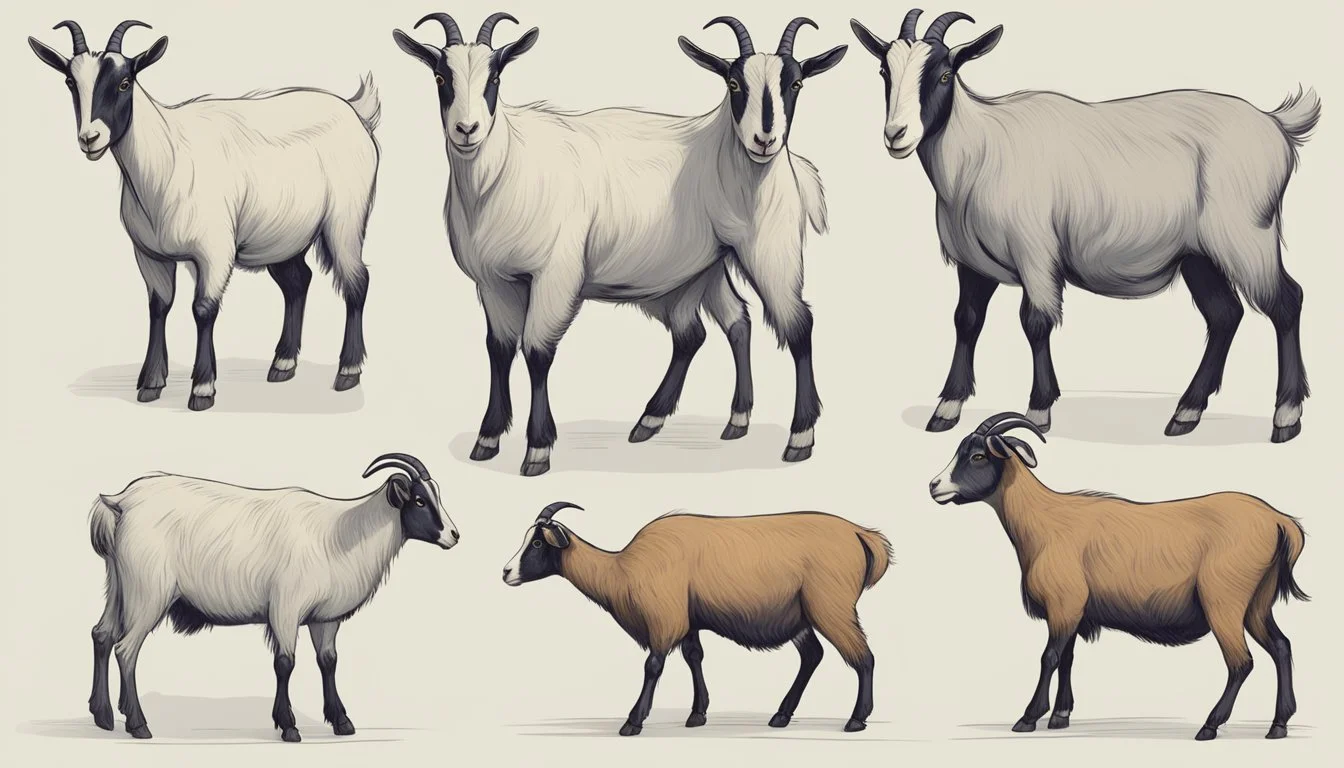How do I Evaluate the Conformation of My Goats
A Guide for Breeding and Show Success
Evaluating the conformation of goats is an essential step for anyone involved in goat breeding or preparing animals for show. Conformation refers to the overall structure and physical appearance of an animal, reflecting its quality, health, and genetic potential. A goat with good conformation will not only perform well in competitive shows but is also likely to be a superior breeding animal, capable of passing on desirable traits to its offspring.
To properly assess a goat's conformation, breeders and exhibitors must pay close attention to various physical attributes, such as body shape, bone structure, and musculature, which are indicative of the animal’s ability to grow, reproduce, and produce milk or meat efficiently. Each breed has specific standards that the goats are evaluated against, and these standards guide breeders in selecting and preparing their animals for breeding or competition.
A thorough conformation evaluation will consider the balance and proportion of the animal as well as its movement. These aspects are not only vital to success in the show ring but are also indicative of the animal's overall health and viability as breeding stock. Sound conformation contributes to the longevity and productivity of goats, making it a critical component of herd management and improvement strategies.
Understanding Goat Conformation
Accurate evaluation of goat conformation is essential for breeders and show enthusiasts aiming for peak health, productive capabilities, and aesthetic qualities. It's about assessing the alignment and proportions of various body parts, ensuring they meet specific breed standards for dairy or meat goats.
Assessing Body Structure
Body Condition: Observers should examine the goat's overall body condition, which reflects its health and suitability for breeding or show. A healthy goat will have a well-muscled form, not overly fat or excessively thin, indicating good nutrition and potential for stamina.
Backbone: Visibility is critical here; it should be straight but not so prominent that it suggests undernourishment.
Ribs: They should be well-sprung, with adequate space between them, suggesting a strong frame and room for body function.
The structure also includes how well the shoulders blend into the body — they should be firm and tight, not loose. The loin should be strong and muscled, and the pins — the bony protrusions at the hips — should be wide apart and level. This ensures good reproductive health and physical stability.
Evaluating Physical Stature
Physical stature embodies the height and length of an animal, directly correlating with its breed and use.
Dairy goats: A dairy goat should display more refinement, with long, lean necks and angular bodies focusing on the ability to produce milk.
Meat goats: In contrast, a meat goat will showcase a broader, more muscular build, emphasizing meat production.
Inspect the legs and pasterns closely; they should be short and strong to carry the body efficiently without any sign of weakness. The width of the animal, especially through the chest, is indicative of heart and lung capacity, affecting its vitality and overall health.
In summary, conformation in goats is a composite trait referencing body condition, structural integrity, and physical stature relevant to the goat's purpose, whether for dairy production or meat.
Breeding Program Essentials
To establish a successful breeding program, it is critical to set clear objectives and employ strategic genetic selection. These efforts lay the groundwork for enhancing herd quality and adhering to breed standards.
Genetic Selection Criteria
In a breeding program, the choice of breeds and individual animals for reproduction is paramount. Selection criteria should align with purebred standards if breeding for conformation or specific breed standards. Genetic diversity should be considered to maintain a healthy herd with robust genetic traits. Essential traits might include:
Fertility and reproductive efficiency
Structural soundness and conformation
Milk production levels (for dairy goats)
Growth rates and meat quality (for meat goats)
Each trait should be weighted based on its importance to the breeder’s goals. Records of lineage and past performance are invaluable in this process.
Improving Herd Quality
Improvement of herd quality is an iterative process and the heart of any breeding program. Key steps include:
Assessment: Regular evaluation of the herd's conformation to identify strengths and weaknesses.
Culling: Removing animals that do not meet specific criteria to refine the herd's genetic makeup.
Matching: Pairing sires and does whose genetics complement each other to enhance desired traits in offspring.
Consistency is key. Improvements may be gradual but can lead to significant gains in conformance to breed standards over time. The ultimate aim is a healthy, productive, and genetically diverse herd that excels, whether the focus is on breeding or showing.
Reproductive Health and Nutrition
Reproductive success in goats requires a foundation of robust reproductive health and optimal nutrition. To evaluate the conformation of goats for breeding or show purposes, one must pay close attention to their nutritional status and reproductive health, as these directly influence fertility and the ability to reach and maintain pregnancy.
Nutritional Requirements for Reproduction
The nutritional needs of goats increase significantly during the reproductive cycle. Body condition scoring (BCS) is critical to ensure does are at an ideal condition for estrus and ovulation. A score of 2-3 out of 5 is typically desired. Flushing the doe, which involves increasing the energy intake, usually through grains and concentrated feeds, is practiced leading up to the breeding season to enhance the ovulation rate. During this period, adding a supplement that is rich in energy, protein, and vitamins can be beneficial.
Prior to breeding: Aim for a body condition score of 2-3 out of 5.
Flushing: Increase feed intake about one month prior to breeding.
Supplements: Consider adding energy-rich supplements to promote a higher ovulation rate.
Managing the Breeding Season
During the breeding season, it's essential to manage nutrition to support both estrus and successful conception. Goats should have access to high-quality forage and receive adequate grain or concentrate supplementation to maintain good body condition. Regular monitoring during this time helps ensure that the animals are not over or underconditioned, which can impact reproductive performance. Proper exercise is also important during this time to support overall health and reproductive functioning.
Diet management: Provide a balanced diet that supports the increased nutritional needs.
Monitoring: Keep track of BCS to adjust feed as necessary.
Exercise: Maintain an adequate exercise regime to support reproductive health.
Breeding Techniques and Mating Management
When planning a breeding program for goats, two primary methods are widely employed: natural breeding approaches and artificial insemination. Each technique demands careful management to optimize reproductive success and the overall health of the breeding stock.
Natural Breeding Approaches
For natural breeding, the breeding season plays a crucial role as goats are seasonal breeders. A well-timed introduction of a buck can induce estrus in does through the buck effect, which involves the presence of the buck and his pheromones. Breeding harnesses can be utilized to monitor mating, which can indicate when a doe has been serviced by leaving a color mark on her. This method requires close observation of the animals to ensure reproductive health and to determine the appropriate time for breeding.
Artificial Insemination
Artificial insemination (AI) offers more control over the breeding process, allowing for genetic diversity and the use of superior sires without the need for physical proximity. To ensure high semen quality, it is essential to source from reputable suppliers. AI should be carefully timed during the does' estrus for optimal conception rates. AI also necessitates handler expertise in both the handling of semen and the insemination technique to preserve the integrity of the semen and promote a successful outcome.
Health Care and Disease Prevention
Evaluating the conformation of goats for breeding or show requires vigilant health care management, including strategies for disease prevention. A robust regimen for routine vaccinations and deworming is crucial, as is prompt attention to common health issues that may arise.
Routine Vaccinations and Deworming
All breeding and show goats should adhere to a strict schedule of routine vaccinations and deworming protocols. Vaccinations are essential to prevent diseases such as tetanus, for which a tetanus toxoid booster is commonly administered. To mitigate the risk of parasites, a strategic deworming program should be followed, tailored to the specific parasite risks of the area.
Vaccination Schedule:
Tetanus toxoid: Annually, with booster shots as per veterinary guidelines.
Additional vaccines: As per regional disease prevalence and veterinary recommendations.
Deworming Schedule:
Regular fecal checks: To determine the need for and frequency of deworming.
Deworming agents: Administer appropriate anthelmintics based on fecal check results and veterinary advice.
Addressing Common Health Issues
Breeding and show goats may also face many health challenges, including conditions such as pregnancy toxemia. This condition, along with others, should be promptly recognized and treated under veterinary supervision to ensure the health and viability of the herd.
Monitoring for Health Issues:
Pregnancy toxemia: Look for signs in pregnant does such as lethargy and loss of appetite, especially in the last trimester.
Intervention: Provide supportive care and contact a veterinarian immediately if pregnancy toxemia is suspected.
By maintaining these health care standards, one can ensure the well-being of their goats, which is a prerequisite for successful breeding and showing.
Herd Management and Environmental Factors
When managing a goat herd, it is essential to consider the intricacies of feeding strategies and the adaptation of housing to suit the local climate. These factors are critical in raising healthy goats that are well-suited for breeding or show purposes.
Effective Feeding Strategies
Feed quality has a direct impact on the health and conformation of goats. It is imperative to provide a balanced diet that meets nutritional needs, which varies depending on whether the goats are being raised for breeding or showing. For instance, a high-quality forage such as alfalfa can be supplemented with grains to ensure adequate energy for gestating or lactating does. Additionally, minerals and vitamins should be available to prevent deficiencies that can affect growth and conformation. Feeding should be adjusted in the fall as goats prepare for winter, increasing their caloric intake to maintain body heat and condition.
Diet Composition for Breeding Goats:
50-60% Forage
40-50% Concentrate Feed (Grains)
Free-Access to a Mineral Supplement
Housing and Climate Adaptations
Climate plays a significant role in shaping appropriate housing and care for a goat herd. Housing should provide protection from extreme weather, be it the heat of summer or the cold of winter. Goats require dry, draft-free shelters that still offer ample ventilation. In warmer climates, providing shade and cool water is paramount, while in colder climates, proper insulation and perhaps even heating are essential to avoid stress from cold weather. It is also important to adapt management practices to the changing seasons, from the timing of breeding to ensure kids are born in favorable conditions, to adjusting feed and care as temperatures drop in the fall.
Seasonal Adaptations for Housing:
Summer: Shade structures, adequate ventilation, and fresh water
Winter: Insulated shelters, windbreaks, and dry bedding
Implementing proper feeding strategies and optimizing housing for the climate are ongoing and dynamic parts of successful herd management. These efforts will contribute significantly to the development and maintenance of desirable traits for breeding and showing goats.
Processing and Marketing Goat Products
Optimizing the processing and marketing of goat products is crucial for enhancing their profitability. Producers need to focus on quality, value addition, and strategic marketing to successfully sell dairy and meat products, as well as byproducts like fiber and hides.
Milk and Dairy Production
Dairy goats are valued for their ability to produce milk with a higher butterfat content, which is ideal for creating rich cheeses and dairy products. During lactation, attention to the quantity and quality of goat milk is imperative. To counteract the negative public perception of goat's milk flavor, producers must implement effective strategies that ensure the milk's appealing taste and consistency. Technological advancements assist in maintaining uniformity in milk products, which is essential, given the seasonal nature of milk production. This leads to the ability to market these dairy products, such as cheese, year-round.
Meat, Fiber, and Other Products
In addition to dairy, goats can be a source of high-quality meat. Correct handling, processing, and marketing are required to ensure meat products meet consumer expectations and safety standards. Products vary from cured and fermented meats to patties and sausages, adding value to the meat from goats that may not meet premium product specifications. The goat fiber, especially cashmere and mohair, is highly valued and proper processing can increase its market worth. Goats also provide hides that can be turned into various leather goods. By optimizing these products, farmers can significantly boost their profitability.
Lifecycle Considerations
Evaluating the conformation of goats throughout different stages of their lifecycle is crucial for breeding and showing. Specific physical traits can indicate the animal’s suitability for reproduction, milk production, and overall health.
From Birth to Weaning
From the moment kids are born, assessing their conformation begins. The assessment can help predict their development. Doelings and bucklings show early signs of their future physical structure. Weaning, which typically occurs around 8 to 12 weeks of age, is another critical milestone. During this time, consistency in body shape, alertness, and growth patterns is observed.
Gestation and Kidding
The gestation period for goats averages 150 days. Proper observation of does during this time is important to ensure they have the optimal conformation for successful parturition. During kidding season, attention is given to the doe's ability to carry and deliver her litter efficiently. Litter size and the health of the newborn kids are indicative of the doe's reproductive and physical health.
Post-Kidding Management
Post-kidding, does enter a phase known as freshening, where milk production begins. This period requires close monitoring of the doe's body condition to sustain health and productivity. Observing the recovery and the capacity to return to a healthy estrous cycle post-kidding provides insight into the goat's readiness for the next breeding season.
Throughout these stages, nutrition, genetic factors, and overall management play a critical role in the conformation and future success of goats in breeding or show programs.
Future Trends in Goat Breeding
As the field of genetics advances, the approach to breeding goats continues to evolve with a significant shift towards precision breeding. Precision breeding favors the identification and propagation of specific genetic traits that align with improved health and productivity, leading to a rise in genomic evaluations. Researchers now deploy genomic evaluations for conformation traits, a trend that is particularly promising for improving dairy goat breeds, such as the Oberhasli.
In the not-too-distant future, one may expect a more widespread adoption of these genomic tools across goat populations. This integration aims at enhancing traits like milk production, disease resistance, and overall physical conformation. A goat with optimal conformation is neither emaciated nor obese, ensuring they are fit for either breeding or showing purposes.
Body Weight: Balanced (Neither emaciated nor obese)
Dairy Character: Strongly developed in breeds like Oberhasli
Structural Soundness: Correct leg and feet alignment for longevity
Moreover, the trend includes the utilization of high-throughput SNP arrays to enhance the efficiency of breeding programs. By doing so, breeders can minimize the chances of passing on undesirable characteristics, such as those leading to poor body condition or health problems.
With environmental concerns on the rise, future trends may also involve selecting for traits that contribute to sustainable farming practices. For instance, selection for goats that efficiently convert feed (including less conventional ones like corn) into milk could see increased focus. Sustainability might also factor into breeding decisions to lessen the environmental footprint of goat farming.
It's an exciting time for the industry, as these technologies not only promise to revolutionize how breeders select and manage their herds but also how they contribute to a more efficient and sustainable agriculture landscape.



